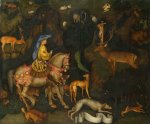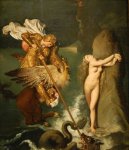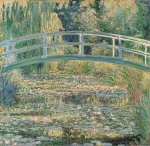In the National Gallery Museum there are lots of paintings but the ones which have struck us are the paintings representing countryside and landscape. These themes have always been chosen by painters but we have chosen three painting which are really realistic and beautiful from our view point.
Paintings 1250 to 1500 :
The common paintings of this medieval period are religious, made for altars in churches or for private devotion. In the 15th century, portraits and scenes from ancient history and mythology achieved an increasing success. Realism also affected some subjects. This century is as well noticeable for technical advances, like oil paint.
It was made by Pinasello (1395-1455), a painter of the Renaissance, one of the end Gothic style’s painter. He painted the previous frescos of the Basilique Saint Jean de Latran of Rome. The painting shows the vision that Eustache supposedly had when he met a stag whose antlers formed the picture of crucified Christ.
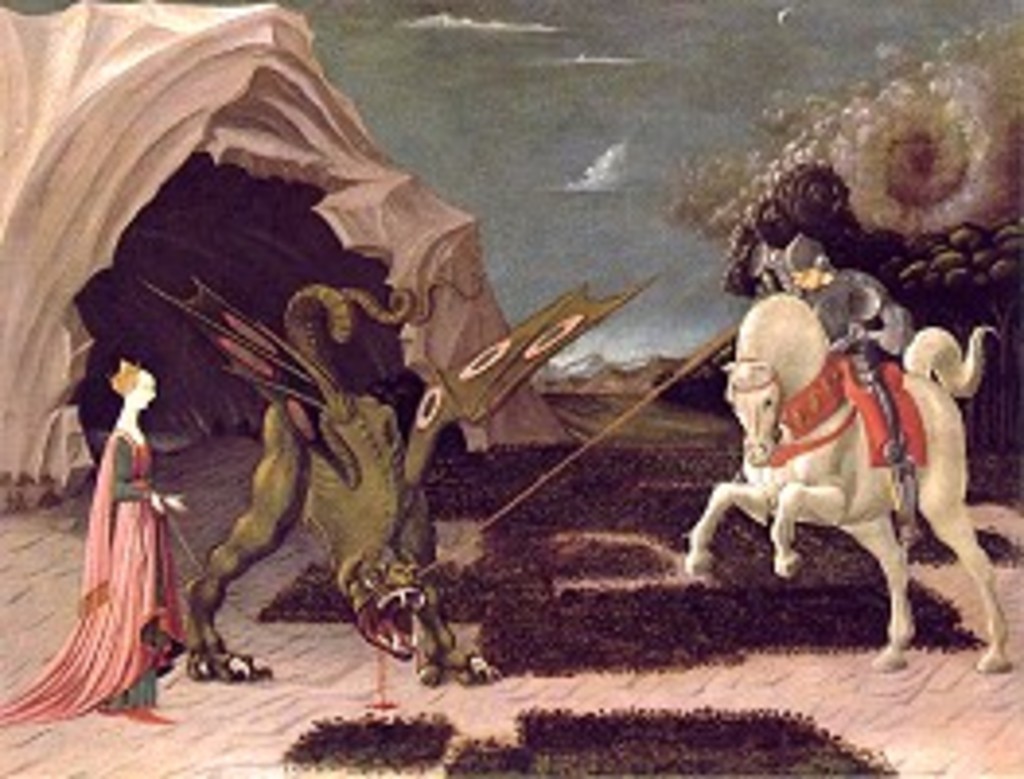
- St George and the Dragon, about 1470, by Paolo Uccello
St George and the Dragon was painted by Paolo Uccello (1397-1475) a Italian Painter of the early Renaissance. He was a fervent adept of the new rules of the perspective techniques. He made major works like the dome of the church Santa Maria del Fiore Saint George, a knight is represented riding a rearing horse, stabbing a dragon about to eat the princess on the left.
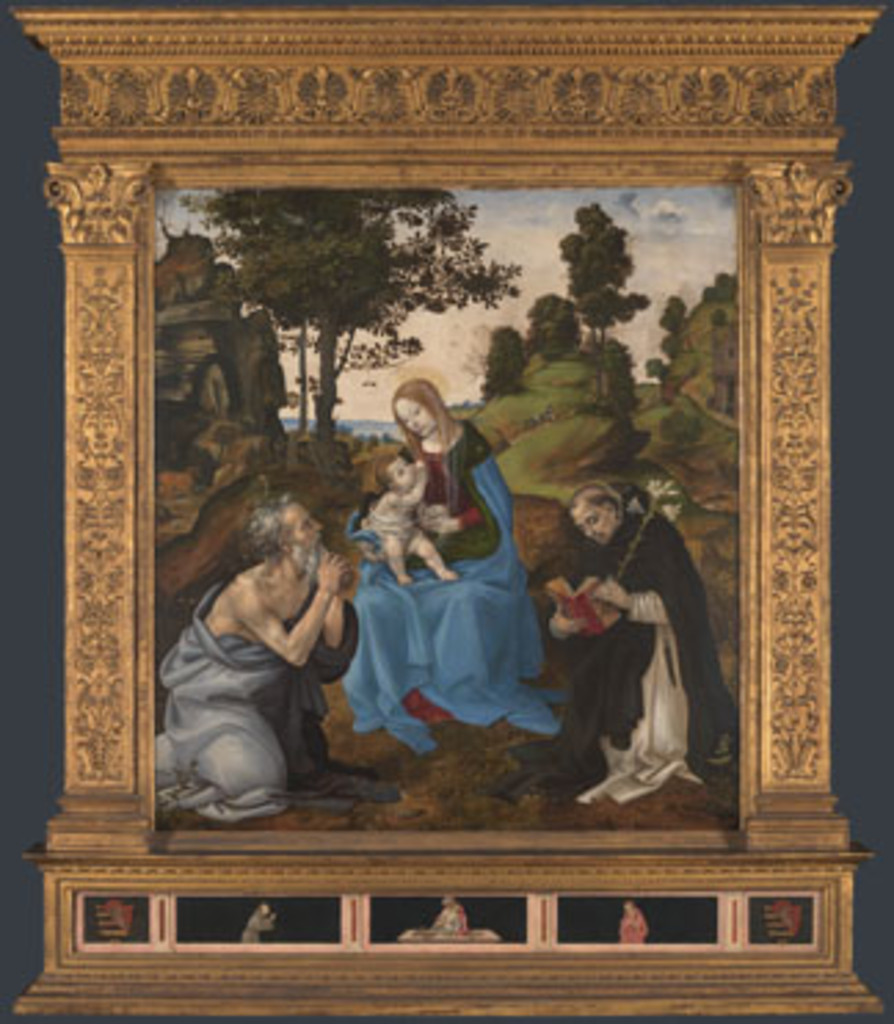
- Virgin and Child with St. Jerome and St. Dominic - about 1495 - Filippino Lippi
This altarpiece was made by Pilippino Lippi (1457-1504) an Italian Renaissance painter of the Florentine school. He made the decoration of the chapel. Filippino’s fame spread throughout Italy and he painted major series of frescoes in Rome as well as Florence. This painting shows the Virgin with Jesus in her arms with St Jerome and St Dominic kneeling and praying for her. St Jerome is a saint and a doctor of the Catholic Church, his lion is behind him in the background, while St Dominic is a priest from Spain and also a saint patron of astronomers. Joseph is also believed to be included in this picture. He may be the man in the background walking the donkey. The building on the far right side is thought to be a hospital, which would relate to the charities of St. Dominic.
Paintings 1500 to 1600 :
The leading artists of this period achieved a fame that has never diminished. In Italy, Renaissance painters sought to surpass the painters of the ancient Greece and Rome. Some portraitists were highly prized and mythology became almost as important as Christian paintings.
Patinir was a pioneer who specialised in landscape painting. His compositions fall into two basic types : the panoramic landscape, and that in which the view is partially blocked by a tall rock formation. Patinir’s landscapes recall the background landscapes in the work of contemporary Dutch painters like Gerard David. In this painting, Saint Jerome is shown as a hermit. The background evokes the story of the saint’s lion, charged to guard the access of the monastery, in the Golden Legend. The access was stolen by some merchants while the lion was asleep, but was later recognised by the lion and the merchants responsible for the theft came to beg forgiveness from the abbot.
Paintings 1600 to 1700 :
While some artists of this period looked to the art of the past in search for inspiration, they passed down their own style. Religious subjects were treated so as to engage the emotions of the viewer. In the Netherlands, landscapes and scenes of everyday life were represented – from elegant social gatherings to lively scene – which enjoyed great popularity.
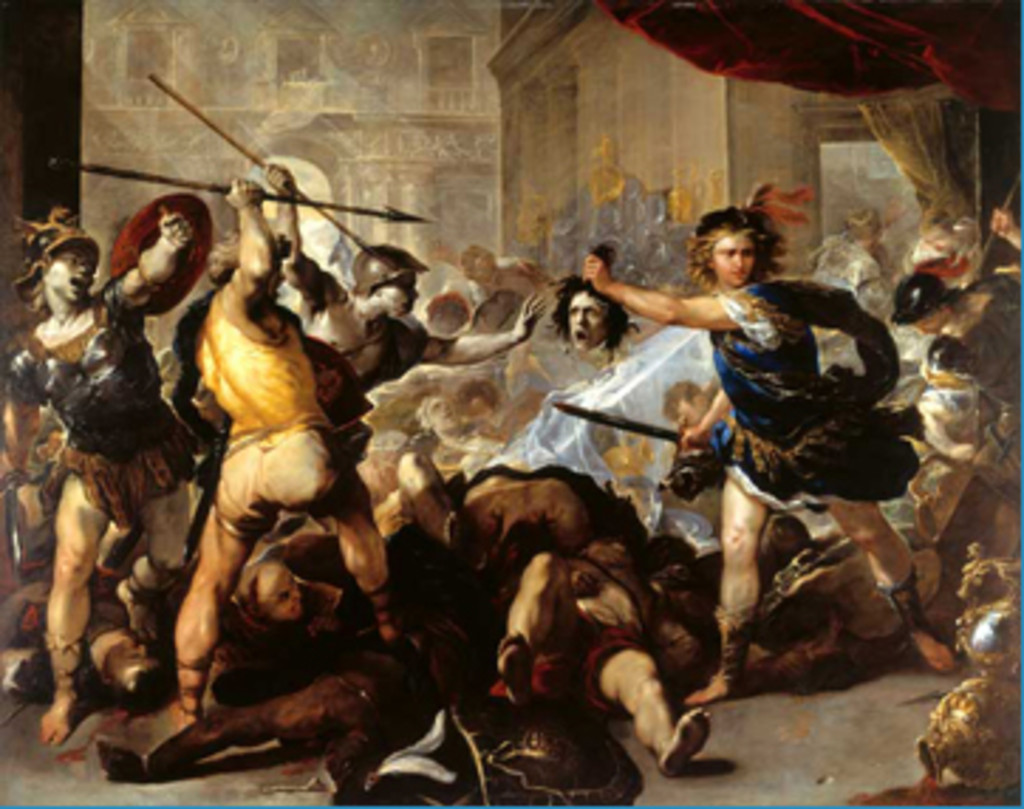
- Perseus turning Phineas and his Followers to Stone - early 1680s - Luca Giordano - click to enlarge the picture
Luca Giordano was the leading Neapolitan painter of the later 17th century. He was born in Naples and is also known as Fa Presto (“does it quickly), because of his speed of painting. His style was well adapted to express the drama and the pathos of religious and mythological subjects. In this painting of 1680s, Perseus was celebrating his marriage to Andromeda when her previous suitor, Phineas, burst in to kill his rival. Perseus revealed the head of the Gorgon, Medusa, thus turning his enemies to stone. The newly acquired frame is a striking example of a Florentine mid-17th century design with finely carved cartouche centres and corner masks.
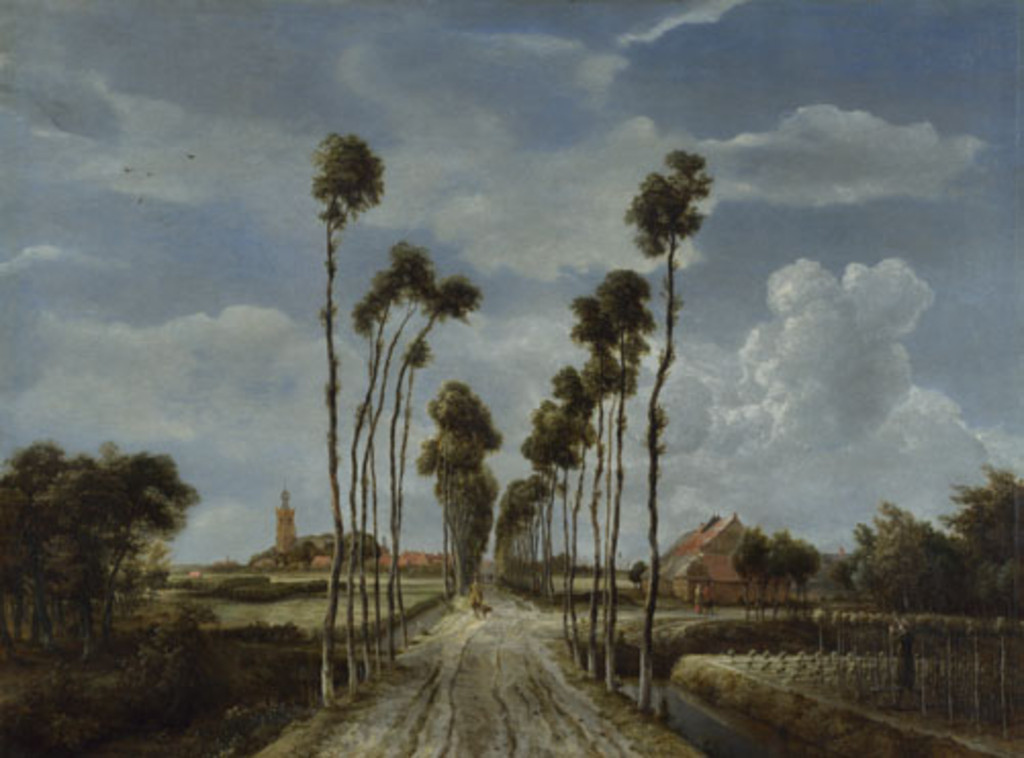
- The Avenue at Middelharnis - 1689 - Meindert Hobbema
Meindert Hobbema was a Dutch painter born in Amsterdam on the 31 October 1638 and died in Amsterdam on the seventh of December 1709. He belonged to the Baroque movement and the Dutch Gold century. One of his most famous painting is The Avenue at Middelharnis painted in 1689. This picture is one of the first landscape representation because before almost of the paintings were religious or mythological paintings. On this oil on canvas we can see in the foreground a path and some trees who seems to be really big, we can also see some tree clumps and a field on the left. In the background there is a village, we can also noticed that the weather is cloudy.
Paintings 1700 to 1900 :
Although the production of grand paintings for churches and palaces continued, it became more common to paint smaller works, which was afterwards exhibited and sold through art dealers and public exhibitions. The art movements of the 19th century emerged with the idea of the independent artist who rebelled against the official art establishment.
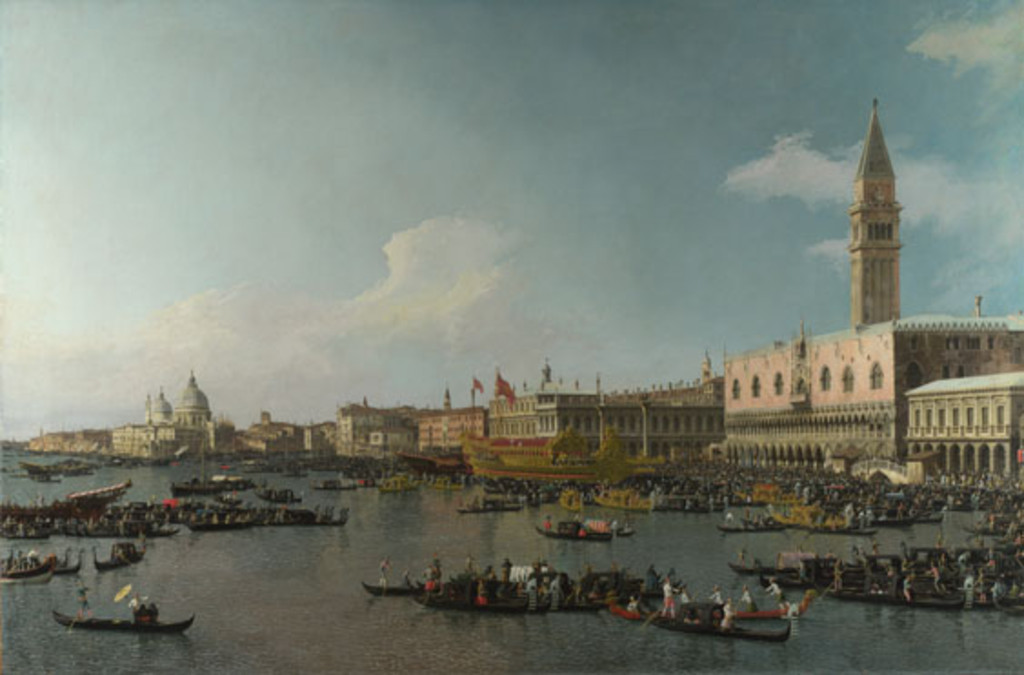
- Venice : The Basin of San Marco on Ascension Day - about 1740 - Canaletto
Giovanni Antonio Canal, known as Canaletto, was born in Venice, and was the son of a painter. He made lot of different views of the city and famed for his precisely depicted and evocative painting. He is one of the greatest painters of the eighteen century and was very influential for the others painters representing the city. This beautiful painting of 1740 shows a view of the Doge’s Palace, with Santa Maria della Salute and, on the left, the entrance to the Grand Canal. This painting was done during the annual ceremony which symbolized the marriage of Venice to the sea. Together with ’A Regatta on the Grand Canal’, these are the grandest views of Venice that Canaletto made, to show the beauty of this city during ceremonies.
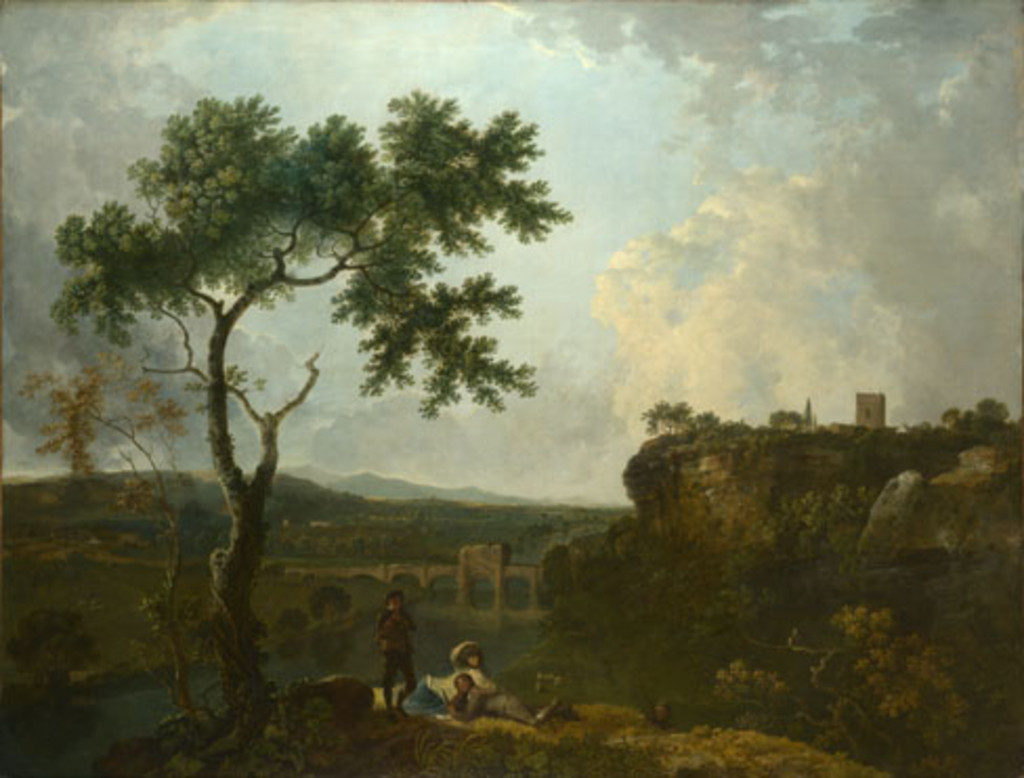
- The Hold Bridge on the River Dee - 1762 - Richard Wilson
Richard Wilson was born in 1713/1714(we don’ t know exactly when ) in Wales, moved to England in 1729. He trained with Thomas Wright as a portrait painter. Wilson was a pioneer of landscape painting in Britain. He visited Italy and he met French painter Joseph Vernet, who encouraged his interest in landscape representation. Like Vernet, Wilson was strongly influenced by the work of Claude and Gaspard Dughet, and he interpreted the English and Welsh landscapes in their manner after his return to England. Wilson is sometimes called ’The English Claude’.He exhibited at the Society of Artists from 1760 and was a founder member of the Royal Academy in 1768. He died very poor. One of his most famous paintings is The Hold Bridge on the River Dee. It was painted in 1762. This is a view of his work. On this painting we can see trees on the foreground, under these trees some people seem to be reclining in the shade, only one person is standing up. These people are on a rock overlooking a river. The man who is standing up seems to have a gun so he is probably a hunter. On the middle plan we can see a river probably the Dee because the painting’s name is The Holt Bridge on the river Dee. We can also see tree-covered cliffs with a building which seems to be a tower. In the background we can see a little town and a bridge over the river. The sky is cloudy but there is a hole in the sky from which the light suffusing the scene seems to originate. On this painting the color are darker than on Hobbema’s painting. Here we have grey brown ocre tones but in Hobbema’s works we have clear colors like blue or light green. The scene is really realistic, the artist painted it without adding any embellishments. He painted the scene with more details than Meindert Hobbema because the scene is more complex than the Dutch’s work in which there was just a tree-lined lane and a town in the background.
Ingres (1780-1867) studied nude and classical art. He became the defender of a rigid form of classicism. Ingres saw himself as a historical painter, the highest goal of academic art, The subject is taken from Ariosto’s epic poem, ’Orlando Furioso’. In this mythical scene Ruggiero, riding on a hippogriff, rescues Angelica from a sea monster.
Monet was born in Paris, the son of a grocer, and grew up in Le Havre. During his famous career, he was the leading French Impressionist landscape painter In 1883, Monet moved to Giverny where he lived until his death. Over there, he created a water garden ’for the purpose of cultivating aquatic plants’, over which he built an arched bridge in the Japanese style. In 1899, after the garden had matured, Monet painted 17 views of the motif under different light conditions. Surrounded by luxuriant foliage, the bridge is seen here from the pond itself, among an artful arrangement of reeds and willow leaves.
And to conclude our visit of National Gallery, here is a nineteenth century painting by John Constable. John Constable was born on the 11th of June 1776 in Suffolk in England, he died in Hampstead in London on the 31th of march 1837 by the age of sixty years. He was an English painter and he had belong to romanticism. He had studied at the Royal Academy school, he had also exhibited his works at the Royal Academy of London. Like Thomas Gainsborough he was influenced by Dutch artists like Jacob van Ruisdael. He is famous for his landscapes which are mostly from Suffolk countryside. His pictures are really popular today but at his time his works weren’t popular in England. One of his most famous works are The Hay Wain painted in 1821. This is a view of his work.
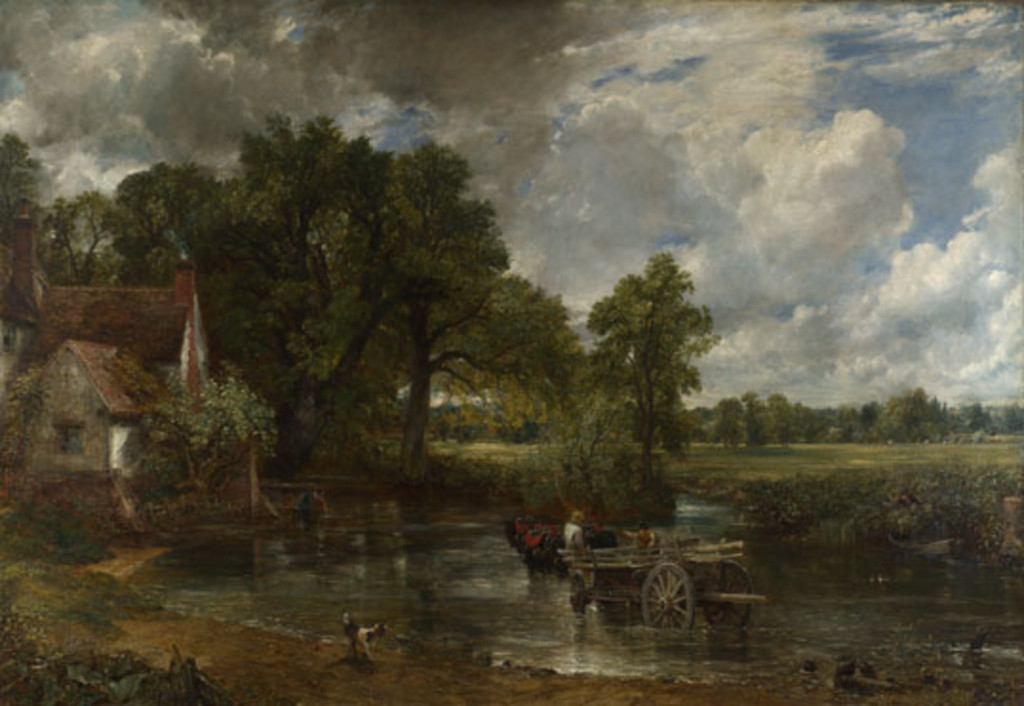
- The Hay Wain - 1821 - John Constable
On this painting we can see a river near a hay wain with some trees. In the background we can see a garden and perhaps a forest in the background. The painting is very realistic and its construction is not as as symmetrical Lorrain’s works. He used to live near this farm as a boy. The artist painted nature as it was, and he gives a new life to the representation of the countryside, which until then had always been stylized. The artist loves nature so in his work natural tones are predominant. The different tones are complementary and add harmony to the whole. The blue of the pool reflects in the sky. We find an echo of the red tiles of the house in the horses’harness. The Hay Wain represents a near-perfect English summer day and Constable accomplishes this by using natural light.
The landscape representation has evolved a lot since the seventeenth century. The first landscape representations were not hazy and there was not a lot of details. It was very basic. The eighteenth century paintings were more detailed and fuzzy. But the nineteenth century is really the century of landscape representations which were very detailed and more complex and more beautiful than the first landscape representation.
To conclude, National Gallery was a very beautiful exhibition with huge quantity of very different paintings . The museum is so fantastic that we would have needed more time to visit all. The visit was really exceptional and we will keep good memories of it.
- Podcast et RSS
- Plan
- Mentions
- Rédaction
- Se connecter

-
2009-2024 © Lycée George-Sand La Châtre - Tous droits réservés
Ce site est géré sous SPIP 3.2.19 et utilise le squelette EVA-Web 4.2

Dernière mise à jour : lundi 24 janvier 2022



